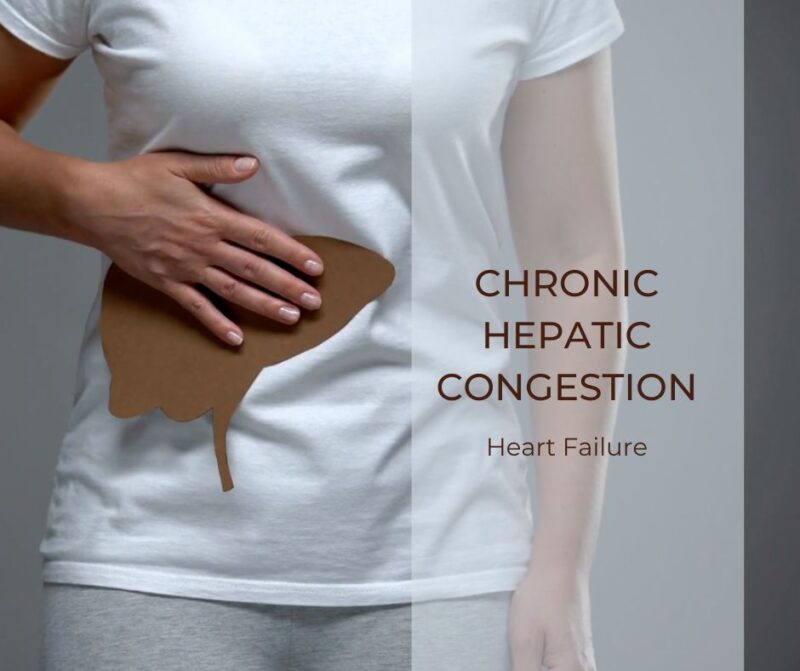Chronic Hepatic Congestion is a multifaceted condition that has significant implications for liver health. It’s a topic that requires a nuanced understanding, especially given its association with various heart conditions.
In this article, we will delve into the intricacies of CHC, breaking down its causes, manifestations, and long-term effects. We aim to present this complex topic in a manner that’s both comprehensive and accessible to a wide range of readers.
Chronic Hepatic Congestion is a manifestation of prolonged liver congestion, often resulting from underlying heart conditions. It’s essential to understand this condition not just from a liver health perspective but also in the broader context of cardiovascular health.
This is a condition characterized by the prolonged congestion of blood in the liver, primarily due to chronic right heart failure. This congestion can lead to various complications, including liver damage and, in severe cases, liver failure.
Why is it Important?
Understanding Chronic Hepatic Congestion is crucial because it sheds light on the interconnectedness of our body’s systems. A failure in one area, such as the heart, can have cascading effects on other organs, like the liver.
Similarly, issues in the urinary system, such as urinary tract infections, can provide insights into broader health implications and the importance of comprehensive care. Recognizing these connections can lead to more holistic approaches to health and treatment.
While managing underlying heart conditions is paramount, it’s also essential to be aware of various compounds, such as certain adrenergic agonists (like ephedrine), and their potential influence on cardiovascular health.
The Role of Heart Failure

Heart failure, particularly right heart failure, plays a pivotal role in the onset and progression.
Right heart failure leads to a backup of blood, causing congestion in the hepatic sinusoid. This congestion follows a “Centrilobular Pattern.” In acute hepatic congestion, the effects are immediate. However, when this condition becomes chronic, the implications are more severe and long-lasting.
Hypotension, which may result from left heart failure or septic shock, further complicates the situation. Reduced blood flow into the liver exacerbates hepatic hypoxia. This doesn’t just lead to centrilobular degeneration; hepatocytes near the terminal hepatic venule undergo ischemic necrosis, known as Centrilobular Necrosis.
Nutmeg Liver: A Telltale Sign
The term “Nutmeg Liver” refers to the mottled appearance of the liver, a direct result of chronic hepatic congestion. This pattern is indicative of the ischemic necrosis of hepatocytes, particularly those near the terminal hepatic venule.
If Chronic Hepatic Congestion persists, the centrilobular necrosis slowly transforms into centrilobular fibrosis. Historically, this has been termed “Cardiac Cirrhosis.” However, referring to it as cirrhosis can be misleading. While both conditions affect the liver, their causes, manifestations, and treatments differ significantly.
The Mechanism Behind

Understanding the underlying mechanisms of Chronic Hepatic Congestion is crucial for both diagnosis and treatment. Let’s delve deeper into the physiological changes that occur in the liver due to this condition.
The Centrilobular Pattern is a hallmark of CCHC. It refers to the congestion of blood in the central region of the liver lobule. This pattern is a direct result of the backup of blood due to right heart failure, leading to congestion in the hepatic sinusoid.
Hypotension, or low blood pressure, can significantly reduce the total blood flow into the liver. This reduction exacerbates hepatic hypoxia, a condition where the liver doesn’t receive enough oxygen. Over time, this can lead to severe liver damage, emphasizing the importance of maintaining stable blood pressure levels.
Long-Term Effects of Chronic Hepatic Congestion
While Centrilobular Necrosis is a direct result of Chronic Hepatic Congestion, its implications go beyond immediate liver damage. This form of necrosis indicates the death of liver cells, particularly those near the terminal hepatic venule. Over time, this can compromise liver function and lead to more severe health issues.
As mentioned earlier, prolonged CHC can lead to centrilobular fibrosis, historically termed “Cardiac Cirrhosis.” It’s essential to differentiate between the two, as their treatment and prognosis can vary.
While both conditions affect the liver, Cardiac Cirrhosis is specifically linked to heart conditions and is not etiopathogenically related to traditional cirrhosis.
Treatment and Management
Addressing Chronic Hepatic Congestion requires a multifaceted approach, focusing on both the immediate symptoms and the underlying causes.
Given the strong link between Chronic Hepatic Congestion and heart failure, managing underlying heart conditions is paramount. This may involve medications, lifestyle changes, or even surgical interventions, depending on the severity of the heart condition.
In addition to addressing the heart issues, it’s crucial to support liver health directly. This can involve dietary changes, medications to reduce liver inflammation, and regular monitoring to track liver function and detect any complications early on.
Diagnostic Tools
Early diagnosis is crucial for effective management of CHC Let’s explore the tools and techniques that medical professionals employ to detect and assess the severity of this condition.
LFTs are a set of blood tests that measure the levels of liver enzymes and proteins. Elevated levels can indicate liver damage or inflammation, making them a primary tool for diagnosing Chronic Hepatic Congestion.
Ultrasound, CT scans, and MRI can provide detailed images of the liver, helping doctors identify any structural changes, such as the mottled appearance characteristic of a “Nutmeg Liver.”
Patient Case Studies: Real-life Scenarios

Analyzing real-life cases can provide invaluable insights into the varied presentations of Chronic Hepatic Congestion and the challenges faced in its management.
Case Study 1: A Dual Diagnosis
A 58-year-old male presented with fatigue, jaundice, and abdominal swelling. While initial suspicions leaned towards a liver-specific ailment, further investigations revealed right heart failure, leading to a dual diagnosis. This case underscores the importance of a holistic approach to diagnosis.
Case Study 2: The Silent Progression
A 65-year-old female, with a history of hypertension, was diagnosed with CHC during a routine check-up, despite showing no overt symptoms. This case highlights the condition’s potential to progress silently and the importance of regular health screenings.
Latest Research and Advancements
Staying updated with the latest research is crucial for understanding Chronic Hepatic Congestion better and finding more effective treatments.
Recent studies have delved deeper into the physiological connections between the heart and liver. Understanding these intricate links can pave the way for more integrated treatment approaches.
Research is ongoing into medications and therapies that can directly address the liver damage caused by Chronic Hepatic Congestion. These interventions, combined with heart-focused treatments, hold promise for comprehensive patient care.
Final Words
CHC is a testament to the intricate interplay between various systems in our body. While it primarily manifests in the liver, its roots often lie in cardiovascular complications. Understanding this condition requires a holistic approach, recognizing the delicate balance between the heart and liver.
With advancements in medical research, there’s hope for more effective treatments and comprehensive patient care. As we continue to unravel the mysteries of Chronic Hepatic Congestion, it’s crucial to prioritize patient education, early diagnosis, and a multidisciplinary approach to treatment.
By doing so, we can ensure a brighter, healthier future for those affected by this condition.

